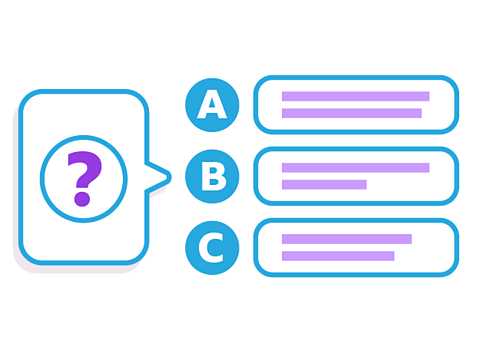Key points about demonstrative adjectives and pronouns in Spanish

demonstrative adjectiveUsed to point out a specific thing or person, or to emphasise something. This, that, those and these are demonstrative adjectives in English. are words in English such as 'this', 'that', 'these' and 'those'.
In Spanish there are two different ways to say 'that' and 'those' according to whether the object is close or far away.
demonstrative pronounA type of pronoun used to represent something so you donāt have to repeat words the words for āthatā or āthisā. They stand alone and do not have a noun to go with them. also mean āthisā or āthatā. They are different from demonstrative adjectives as they stand alone in a sentence.
What are demonstrative adjectives?
Demonstrative adjectives are used to point out a specific thing or person, or to emphasise something. In English, 'this', 'that', 'these' and 'those' are examples of demonstrative adjectives.
Demonstrative adjectives in Spanish
The table shows the three groups of demonstrative adjectives in Spanish:
this/these
that/those (nearby)
that/those (further away)
| this/these | that/those (nearby) | that/those (further away) | |
|---|---|---|---|
| masculine singular | Sorry, something went wrongCheck your connection, refresh the page and try again. | Sorry, something went wrongCheck your connection, refresh the page and try again. | Sorry, something went wrongCheck your connection, refresh the page and try again. |
| feminine singular | Sorry, something went wrongCheck your connection, refresh the page and try again. | Sorry, something went wrongCheck your connection, refresh the page and try again. | Sorry, something went wrongCheck your connection, refresh the page and try again. |
| masculine plural | Sorry, something went wrongCheck your connection, refresh the page and try again. | Sorry, something went wrongCheck your connection, refresh the page and try again. | Sorry, something went wrongCheck your connection, refresh the page and try again. |
| feminine plural | Sorry, something went wrongCheck your connection, refresh the page and try again. | Sorry, something went wrongCheck your connection, refresh the page and try again. | Sorry, something went wrongCheck your connection, refresh the page and try again. |
Note that the masculine singular for este/ese does not end in o but the plural does end in os.
Demonstrative adjectives need to agree with the noun they are describing.
For example:
Me gustan estas manzanas. - I like these apples.
There are two different ways of saying that and those in Spanish. Use ese, esa, esos, esas when something is nearby and aquello, aquella, aquellos, aquellas when something is further away.
For example:
Esta casa es pequeƱa. - This house is small.
Esa casa es pequeƱa. - That house is small. (The house is nearby)
Aquella casa es pequeƱa. - That house is small. (The house is further away)
What are demonstrative pronouns?
Demonstrative pronouns follow the same pattern as demonstrative adjectives and mean 'this' or 'that'. Demonstrative pronouns are different from demonstrative adjectives as they stand alone in a sentence.
For example in this sentence āthisā is a demonstrative adjective:
This house is big.
In this sentence āthisā is a demonstrative pronoun, and replaces the noun in the sentence:
This is big.
Demonstrative pronouns in Spanish
The table below contains the masculine and feminine and singular and plural forms of demonstrative pronouns.
| this/these | that/those (nearby) | that/those (further away) | |
|---|---|---|---|
| masculine singular | Sorry, something went wrongCheck your connection, refresh the page and try again. | Sorry, something went wrongCheck your connection, refresh the page and try again. | Sorry, something went wrongCheck your connection, refresh the page and try again. |
| feminine singular | Sorry, something went wrongCheck your connection, refresh the page and try again. | Sorry, something went wrongCheck your connection, refresh the page and try again. | Sorry, something went wrongCheck your connection, refresh the page and try again. |
| masculine plural | Sorry, something went wrongCheck your connection, refresh the page and try again. | Sorry, something went wrongCheck your connection, refresh the page and try again. | Sorry, something went wrongCheck your connection, refresh the page and try again. |
| feminine plural | Sorry, something went wrongCheck your connection, refresh the page and try again. | Sorry, something went wrongCheck your connection, refresh the page and try again. | Sorry, something went wrongCheck your connection, refresh the page and try again. |
Demonstrative pronouns stand alone and agree with the noun they replace.
For example:
Mi coche es mƔs rƔpido que este. - My car is faster than this one.
Coche is masculine singular so este needs to agree with it and also be masculine singular. The pronoun este replaces the noun to avoid repetition.
La casa es mƔs grande que esta. - The house is bigger than this one.
Casa is a feminine singular noun so the demonstrative pronoun that replaces the noun needs to be in the feminine singular form.
Quiz - Demonstrative adjectives and pronouns
Practise what you've learned about demonstrative adjectives and pronouns with this quiz.
Higher Tier - Neuter demonstrative pronouns
Neuter demonstrative pronouns are often used to refer to abstract ideas or when the nounās gender is unknown or not yet identified.
| Neuter form | English meaning |
|---|---|
| Sorry, something went wrongCheck your connection, refresh the page and try again. | this |
| Sorry, something went wrongCheck your connection, refresh the page and try again. | that (closer) |
| Sorry, something went wrongCheck your connection, refresh the page and try again. | that (further away) |
For example:
Me encanta cuando hace mucho calor. Ā”Eso tambiĆ©n me encanta! - I love it when itās very hot. I love that too!
ĀæQuĆ© es esto? - What is that?
Aquello fue horrible. - That was horrible.
Neuter demonstrative pronouns - Mini quiz

Fill in the gap in the following question:
ĀæQuĆ© es _____ ?
What is this?
ĀæQuĆ© es esto?
The nounās gender has not been identified so the neuter form of the demonstrative pronoun is needed. The neuter form of 'this' is esto.
Now you have learned about demonstrative adjectives and pronouns why not explore the position of adjectives in Spanish?
More on Adjectives and adverbs
Find out more by working through a topic
- count7 of 8

- count1 of 8

- count2 of 8
